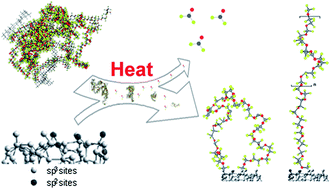Hydrophobic carbonaceous materials obtained by covalent bonding of perfluorocarbon and perfluoropolyether chains†
Abstract
Perfluorocarbon residues, i.e.

* Corresponding authors
a
Dipartimento di Chimica, Materiali ed Ingegneria Chimica, “Giulio Natta”, Politecnico di Milano, via Mancinelli, 7, Milano, Italy
E-mail:
maurizio.sansotera@polimi.it
b Dipartimento di Chimica Fisica ed Elettrochimica, Università degli Studi di Milano, via Golgi 19, Milano, Italy
c C.R.S. Solvay-Solexis, viale Lombardia 20, Bollate (MI), Italy
Perfluorocarbon residues, i.e.

 Please wait while we load your content...
Something went wrong. Try again?
Please wait while we load your content...
Something went wrong. Try again?
M. Sansotera, W. Navarrini, L. Magagnin, C. L. Bianchi, A. Sanguineti, P. Metrangolo and G. Resnati, J. Mater. Chem., 2010, 20, 8607 DOI: 10.1039/C0JM02077J
To request permission to reproduce material from this article, please go to the Copyright Clearance Center request page.
If you are an author contributing to an RSC publication, you do not need to request permission provided correct acknowledgement is given.
If you are the author of this article, you do not need to request permission to reproduce figures and diagrams provided correct acknowledgement is given. If you want to reproduce the whole article in a third-party publication (excluding your thesis/dissertation for which permission is not required) please go to the Copyright Clearance Center request page.
Read more about how to correctly acknowledge RSC content.
 Fetching data from CrossRef.
Fetching data from CrossRef.
This may take some time to load.
Loading related content
